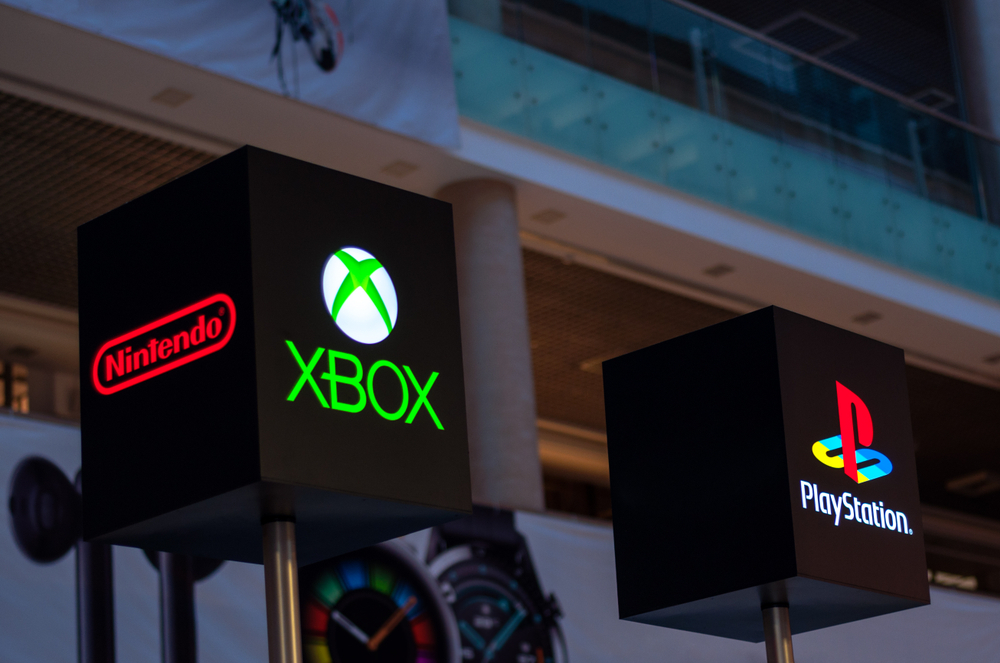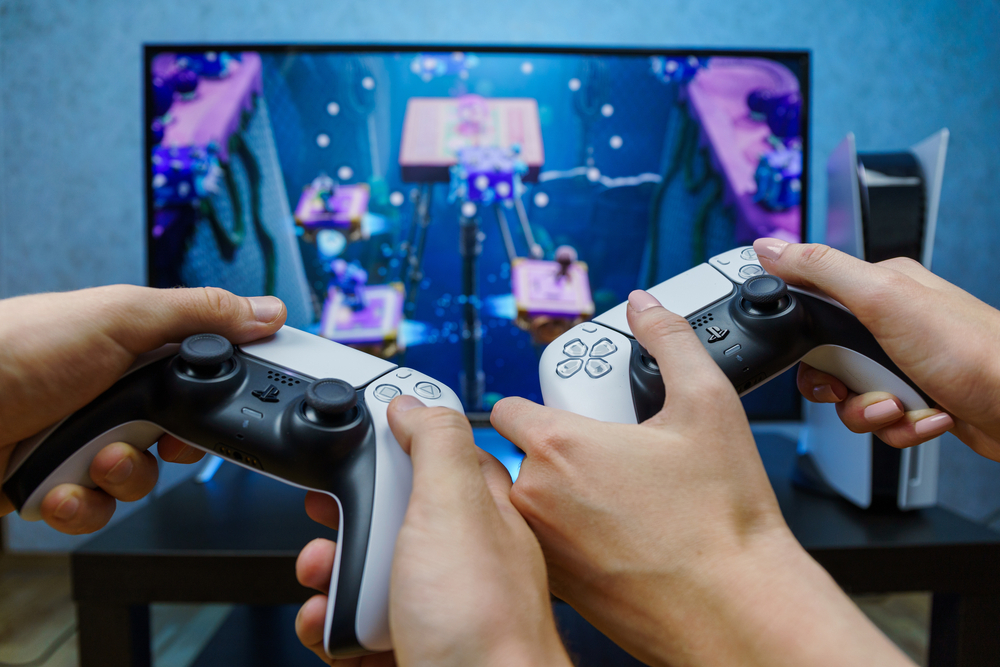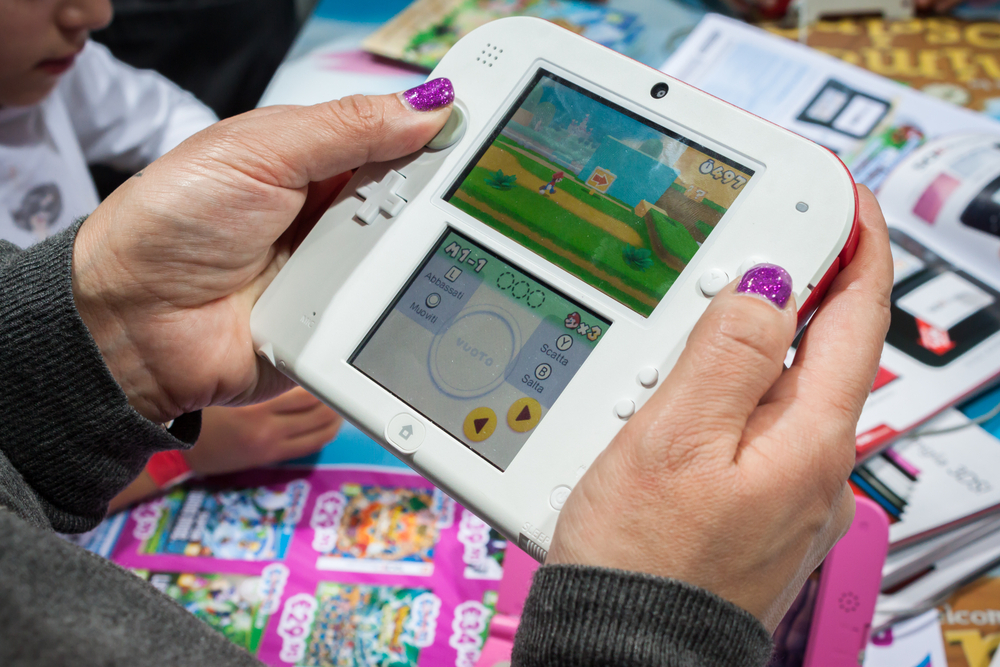The chart-topping gaming consoles in history and the stories behind their success.

CasinoBonusCA Examined the console sales data from the past and present through various sales tracking methods. VGChartz As of September 30, 2023, the data encompasses both the stationary gaming systems linked to televisions like the Xbox 360, and portable systems such as the Game Boy. The detailed graphics and statistical representations help to understand how market shares are distributed across major regions like North America, Europe, and Japan—these areas form the core of the industry for the three leading companies.
Continue reading to discover how your favorite gaming consoles stack up.
- Meet the three major industry giants that clashed fiercely in what is called the 'Console Wars'.
- While Sony’s PlayStation 2 holds the crown, Nintendo makes up most of the top five in console sales.
- Nintendo’s Blue Ocean Strategy
- Sony's unexpected journey into the gaming market.
- Microsoft’s Bets Outside the Xbox
Meet the three major industry giants that clashed fiercely in what is called the 'Console Wars'.

Brand rivalry is commonplace in every sector, but few contests are as intense as those seen in the gaming industry. Dating back to the late '80s and early '90s, prominent companies were embroiled in intense battles over their home gaming consoles. Back then, Sega and Nintendo were the leading players in the so-called 'console wars,' with Sega's Genesis boasting features that Nintendo couldn't match. memorable commercial campaign .
School kids passionately defended their console of choice during breaks, and gaming fans of all ages followed sales figures as eagerly as sports enthusiasts track team scores. As the industry entered the '90s and 2000s, tech giants like Sony and Microsoft joined the gaming race, leading to Sega's withdrawal from the console arena. Today, the dominant gaming console brands are Nintendo, Sony's PlayStation, and Microsoft's Xbox.
Using officially reported data from the leading console manufacturers, coupled with insights from market analysis firms and sales tracking sites, an approximate sales performance for each major console is provided. These numbers give gaming aficionados a glimpse into the fast-evolving market. A console’s superiority can stem from a robust game library or an innovative feature that attracts a broader audience. The successes and failures of Nintendo, Sony, and Microsoft are vividly reflected in their sales data.
Enticing deals. Latest casino reviews. Tactics to boost your winnings. Whatever you're after in terms of casino perks, CasinoBonusCA has you covered.

Though Sony’s PlayStation 2 takes the lead, the majority of top-selling consoles belong to Nintendo.
Launched in 2000, the PlayStation 2 remains the all-time leading video game console in terms of sales. With around 160 million units sold during its active years, the PS2 outshined its contemporaries such as the Nintendo GameCube, which ranks 22nd, and Microsoft’s Xbox, which is 20th. The PS2's prolonged success can be attributed to several factors that kept it popular for years.
Timing played a crucial part in the PS2's triumph. It appeared more than a year before the Xbox and GameCube in every market, launching towards the close of 2001. By then, the original PlayStation had already laid a solid foundation for Sony’s gaming brand. defeating the Nintendo 64 in sales Despite the Xbox containing double the memory and power of the PS2, it failed to capture the consumer market. The PS2 gained extensive backing from third-party game creators, enabling their games to reach a broader audience. Titles like Final Fantasy X, Metal Gear Solid 2, and Grand Theft Auto: San Andreas premiered exclusively on this platform.
Another significant advantage of the PS2 was its inclusion of DVD capabilities. By the year 2000, DVDs had become the standard for film distribution, and the PS2’s affordable DVD player feature appealed to customers who weren't primarily gamers. went on to become bestsellers .
Thanks to its success, the PS2 enjoyed an extensive 12-year production run. Manufacturing only stopped in 2013, notably continuing long after the PlayStation 3 made its debut in 2006.
Not far behind the PS2, with sales upwards of 154 million units, is the Nintendo DS—a portable device incorporating dual screens and launched in 2004. As a successor to the lucrative Game Boy lineage, its main competitor was Sony’s PlayStation Portable, released in 2005. Despite the PSP being more powerful, game developers gravitated towards the DS to craft innovative experiences for users.

Games like Brain Age utilized the DS’s stylus and touch capabilities, drawing in more casual gamers and encouraging quick gaming sessions. Titles such as Nintendogs offered pet-like interactions using controls, while Animal Crossing: Wild World provided gamers with daily activities. Over time, the DS became entrenched in regular user routines. In contrast, the PSP struggled with higher costs and a lack of engaging games.
The Nintendo Switch, the most recent entrant to the top five list, launched in 2017. Known for its 'hybrid' nature, the Switch functions both as a TV-connected console and as a portable device. Boasting an expansive game library and an innovative selling point, it stands as the third highest-selling console in history, with close to 130 million units sold.
The future doesn’t look too bright for the Nintendo Switch, however. Hints of a next-gen successor have started to surface.
Can the Switch surge past the DS as its market relevance wanes? Given the Switch's notably higher price point compared to the DS during its peak, it may remain a distant target for Nintendo. release as early as 2024 A depiction of Nintendo's top-selling consoles throughout history.

Nintendo’s Blue Ocean Strategy
As advancements in technology progress, Nintendo is known for often taking unconventional paths. While Sony's PlayStation opted for CDs in gaming, Nintendo persisted with cartridges for consoles like the Nintendo 64, NES, and SNES. The technical advantages and cost-efficiency of CDs, however, attracted developers to PlayStation. Nintendo only partially owns Yet at times, instead of adhering to existing formats, Nintendo would innovate in entirely new directions. While Microsoft and Sony competed fiercely over graphical supremacy with the Xbox 360 and PlayStation 3, Nintendo opted out of such battles.
By developing its niche in the market, Nintendo crafted the motion-based Wii in 2006. This was a groundbreaking development in pop culture that drew a wider audience, including non-gamers—games like Wii Sports and Wii Fit appealed to those unfamiliar with traditional controllers, with impressive sales figures to prove it.
However, not all attempts were successful—while the Wii soared, the subsequent Wii U released in 2012 stumbled, unable to replicate its predecessor's achievements, debuting ahead of Microsoft's Xbox One and Sony's PlayStation 4 by a year. a “blue ocean” strategy The Wii U's complex controller design puzzled many, and observing the lukewarm reception of third-party titles on Nintendo systems, external game studios were hesitant to engage with the platform, making it Nintendo’s poorest-selling home console.

It wasn't until 2017 with the launch of the Nintendo Switch—a system with a much stronger concept—that Nintendo regained its sales momentum. Though the Switch lacks in graphical fidelity because of its dual nature as a portable console, it reaffirms Nintendo's effective 'blue ocean' strategy.
Dive into the offers from Canada's leading casinos—no deposit needed to start spinning and winning!
An overview showcasing the top-selling PlayStation consoles in history.
With our selection of free spins offers Sony’s Hesitant Foray Into the Gaming World

These include consumer electronics and movie production, but video gaming was a burgeoning sector that the entrenched corporation wouldn’t ordinarily venture into. This changed due to Ken Kutaragi, a Sony Computer Entertainment engineer who later became the company's CEO and chairman.
Kutaragi developed a conceptual disc add-on for the SNES, which would have transformed in a number of industries into what was known as the 'Play Station.' But the partnership fell through after
initial revelations. As a result, Sony chose to independently tread the gaming path under the PlayStation brand, and the results have been monumental. collaboration with Nintendo Both the original PlayStation and its immediate successor outperformed the Nintendo 64 and GameCube in sales, positioning Sony as the market leader—a role previously held by their would-be partner Nintendo. Benefitting from disc-based game mechanics, expansive software backing from leading publishers, and an esteemed brand identity, the early PlayStations indirectly contributed to Sega withdrawing from the console business by 2001. infamous prototype Discover the all-time top-selling video game consoles, a list that reveals both their success stories and the drama surrounding them.
Take a closer look at the most popular gaming systems of all time and unravel the historical narratives, rivalries, and technological breakthroughs that have shaped the world of gaming as we know it.
Famous console sales figures and conflicts that influenced their success. By reviewing historical data from sales tracking sources, we've gained insights into the sales performance of consoles, both past and present. As of September 30, 2023, the data includes sales of home consoles connected to TVs, like the Xbox 360, as well as portable consoles such as the Game Boy. The visuals in this exploration highlight market share across North America, Europe, and Japan, which are the largest markets for the prominent gaming companies. some memorable marketing Stay tuned to find out where your beloved gaming systems rank among the best.
The three gaming giants that have battled fiercely in the 'Console Wars'. sales in Japan faltered for the PS4 Though Sony's PlayStation 2 tops the charts, Nintendo holds a substantial portion of the top five best-selling consoles. Sony's hesitant but impactful foray into the gaming industry. While competition is common across industries, few rivalries are as intense as those in the video game sector. In the late '80s and early '90s, companies like Sega and Nintendo were locked in a heated battle to dominate the gaming market. Sega's bold claim that its Genesis console could do what 'Nintendon't' highlights this rivalry.
The trend continues with the PlayStation 5 Back in those days, students debated at schools about which console reigned supreme, much like sports fans pledging loyalty to their teams. Moving into the '90s and 2000s, tech giants Sony and Microsoft entered the competitive arena, eventually forcing Sega out. Today, the main contenders in the console market are Nintendo, Sony’s PlayStation, and Microsoft's Xbox.
Market research and sales data from the leading console makers and retail outlets have offered gamers a glimpse into this rapidly evolving industry. Some consoles outpace others thanks to innovative features or robust game libraries, while some attract non-gamers with their unique capabilities. Each major brand—Nintendo, Sony, and Microsoft—has had notable triumphs and setbacks, as reflected in their sales figures. best online casinos Exceptional deals on reviews of new casinos and strategic guides to enhance your gains—whatever you seek, especially regarding casino bonuses.

Microsoft’s Bets Outside the Xbox
Though PlayStation 2 holds the top spot, Nintendo dominates much of the top five best-selling consoles.
The PlayStation 2, released in 2000, remains the best-selling gaming console ever, with sales nearing 160 million units. Its success eclipsed competitors like the Nintendo GameCube (now 22nd on the list) and Microsoft's Xbox (ranked 20th). The PS2's compelling features and staying power made it a blueprint for gaming console success. A key advantage that propelled the PS2's achievement was its early entry to the market—more than a year before Xbox and GameCube, which arrived in late 2001. The brand loyalty from the first PlayStation console provided a solid foundation for Sony’s gaming ventures moving forward. Even though Xbox boasted superior memory and processing capabilities, it struggled to capture the market. Significant support from third-party game publishers for the PS2, with iconic titles like Final Fantasy X, Metal Gear Solid 2, and Grand Theft Auto: San Andreas, solidified its success.
The inclusion of DVD technology on PS2 made it an attractive buy in 2000, as DVDs had become the standard for home video. This feature appealed even to those who were not avid gamers. Due to its success, the PS2 had a prolonged production span lasting 12 years, with Sony only halting production in 2013, well after the PlayStation 3's release. Following closely is Nintendo DS, with over 154 million units sold. Unveiled in 2004 as a handheld with dual screens, it succeeded the popular Game Boy line. Only the PlayStation Portable, released in 2005, emerged as its prime competition. The DS's unique design fostered creative game development, engendering widespread consumer interest.
Innovative games like Brain Age utilized the DS's stylus and touch features, attracting casual gamers and brief gameplay experiences. Titles like Nintendogs and Animal Crossing: Wild World made everyday play engaging. The PSP, conversely, couldn't compete due to its higher price and limited game selection. left consumers confused and angry The third best-seller on this esteemed roster is the Nintendo Switch, launched in 2017. Being a 'hybrid' system, it doubles as a handheld and a traditional TV console. Its diverse game library and innovative concept propelled it to nearly 130 million units sold.
As speculation about the Nintendo Switch's market position arises, reports suggest that its next iteration could be on the horizon. a tongue-in-cheek video .
With higher pricing than the DS, will the Switch ever surpass DS sales as its market time decreases? Nevertheless, the DS set an almost unreachable benchmark for Nintendo.
Explore a wealth of no deposit bonus casinos A summary of Nintendo's all-time best-selling consoles.

As technology advanced, Nintendo sometimes pursued its unique approaches. While PlayStation adopted CDs for its games, Nintendo stuck with cartridges for the Nintendo 64, similar to previous systems like the NES and SNES. This allowed the PlayStation to attract developers interested in the lower production costs of CDs.
Instead of adhering to traditional methods, Nintendo often charted bold new paths. While Sony and Microsoft were dueling over graphical power with the PS3 and Xbox 360, Nintendo introduced the motion-powered Wii in 2006, ultimately becoming a cultural sensation by welcoming non-gamers into the gaming world. on cloud streaming technology The Wii's appeal reached a wide audience with games like Wii Sports and Wii Fit that transcended traditional gaming experiences, as reflected by substantial sales.
But with triumphs like the Wii came setbacks such as the Wii U, Nintendo’s first HD console from 2012, launched after the Wii's success and ahead of the Xbox One and PS4.
The Wii U's complex controller design and lack of third-party game support led to it becoming Nintendo’s poorest-selling home console.